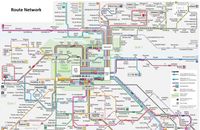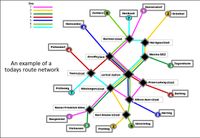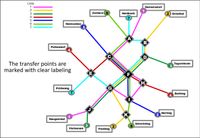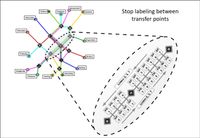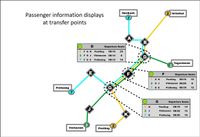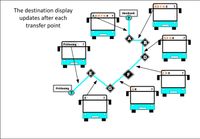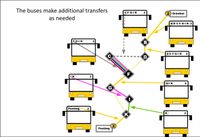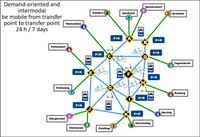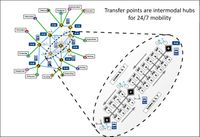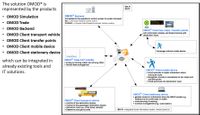The starting situation
|
Do you have a clear view? |
The example of a network map to explain the OMOD® concept. |
STEP 1 sets the stage for the step-by-step transformation of public transport.
|
The transfer points are systematically labeled in a geographically identifiable way. |
The stops between the transfer points are systematically labeled. |
The contents of the passenger information displays at the transfer points show the routes of all transport vehicles and the transport vehicles and the free seats in the vehicle. |
The transport vehicles show their route and no longer just the final stop. |
An example of the destination displays on the vehicles after each served transfer point. |
The transfer points are the synchronization points for the transport vehicles. |
STEP 2 Public transport now also operates on a demand-oriented basis ...
|
Transport vehicles with OMOD driving jobs take optimized routes in addition to their line. OMOD extends the fixed timetables for the public transport system with demand-oriented driving jobs. |
Transport vehicles therefore also run small detours alongside their fixed line for passengers with OMOD driving jobs. |
STEP 3 The demand-oriented share increases for public transport. |
OMOD manages mobility needs in public transport from schedule-oriented to demand-oriented intermodal. This is customer-oriented and cost-efficient for public transport authorities and operators. |
Transfer points provide the infrastructure for intermodal transportation and can also be new meeting places. |
The STEPS 1 to 3 are realized with the following OMOD components ... |
OMOD integrates into any modern IT system. |
The 3 STEPS in overview
|
Have we caught your attention in them?
|
Please take a moment to give us feedback by responding to our (The survey is anonymous and takes about 4-8 minutes of your time) |
